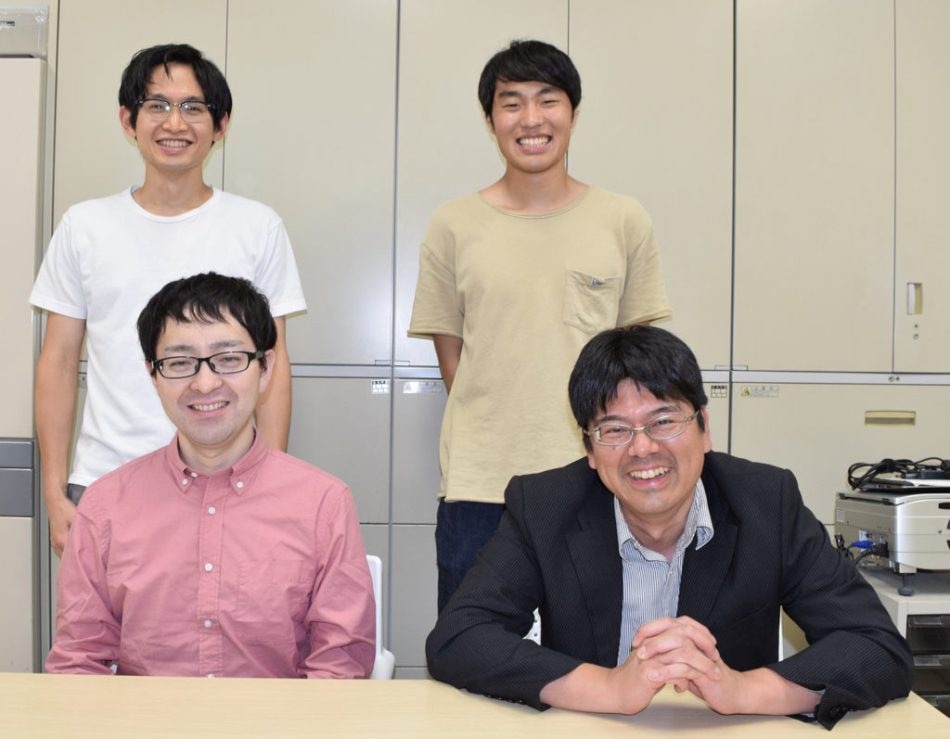Aug 10 2018
 (Clockwise from the bottom-left) Tatsuhiko Yoshino, Shun Satake, Takumaru Kurihara, and Shigeki Matsunaga of the research team at Hokkaido University. (credit: Hokkaido University)
(Clockwise from the bottom-left) Tatsuhiko Yoshino, Shun Satake, Takumaru Kurihara, and Shigeki Matsunaga of the research team at Hokkaido University. (credit: Hokkaido University)
A team of Japanese scientists have developed a technology to make a hybrid catalyst from simple-structured, commercially available rhodium and organic catalysts, which decreases chemical waste and creates molecules with high selectivity of an enantiomer, two molecular structures that are non-superimposable mirror images of each other. This technology is projected to assist in fast and economical drug synthesis.
The technology was created by researchers including Professor Shigeki Matsunaga and Assistant Professor Tatsuhiko Yoshino, both of Hokkaido University’s Faculty of Pharmaceutical Science, and Professor Kazuaki Ishihara and Associate Professor Manabu Hatano, both of Nagoya University’s Graduate School of Engineering.
The two molecular structures found in an enantiomer have diverse effectiveness when used as drugs, even though their chemical properties are similar. One molecular structure can be effective, while the other can produce severe side effects. It is thus vital to choose the preferred molecular structure for chemical conversion when synthesizing drugs. Furthermore, to produce medicines with less wastage, it is essential to have the chemical conversion take place only at a preferred carbon-hydrogen bond with the use of catalysts. To achieve these two requirements, researchers have been using costly rhodium catalysts manufactured in complex, multi-phased production processes. The inadequate availability of such rhodium catalysts has made it hard to apply them for industrial use.
In the current study reported in Nature Catalysis, simple-structured, commercially available rhodium was integrated with an easily available organic catalyst in a single step by utilizing ionic interactions. A basic rhodium catalyst is capable of triggering the anticipated carbon-hydrogen bond, but it is not good at selectively attaining just one molecular structure in an enantiomer. Organic catalysts, for now, can produce the targeted molecular structure, but are not effective in triggering the desired carbon-hydrogen bond. This recently created hybrid catalyst is able to compensate for both individual inadequacies. Using the hybrid catalyst, the scientists succeeded in triggering only the targeted carbon-hydrogen bond and selectively attaining one molecular structure in the enantiomer when conducting chemical conversions of nucleobase derivatives, which is anticipated to increase antiviral performance.
The technology is highly versatile because a variety of organic catalysts can be combined with the simple rhodium catalyst. It is expected to help make core chemical structures for nucleotide medicine, which is gaining attention as a next-generation medicine to treat a number of conditions cheaply and in an environmentally friendly way.
Shigeki Matsunaga, Researcher, Faculty of Pharmaceutical Science, Hokkaido University
This study was done as part of the Strategic Basic Research Programs of the Japan Science and Technology Agency (JST).